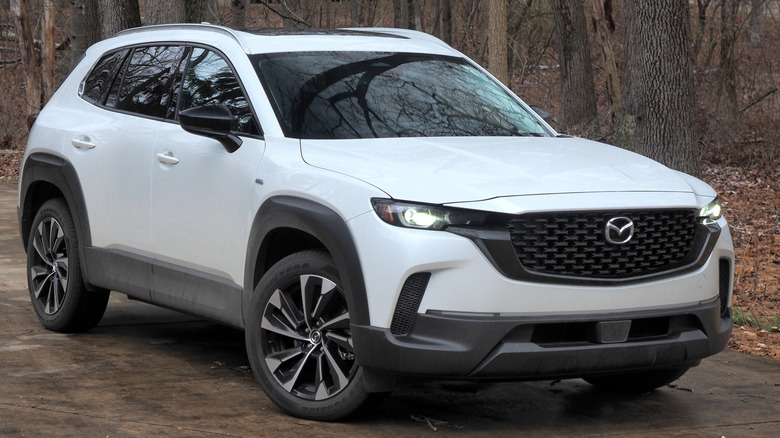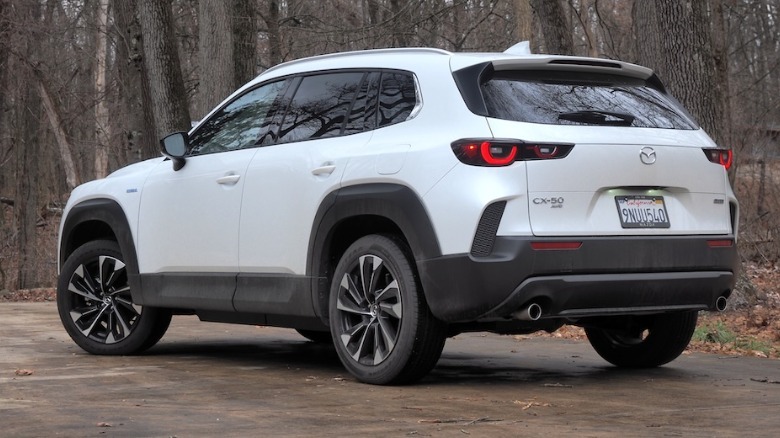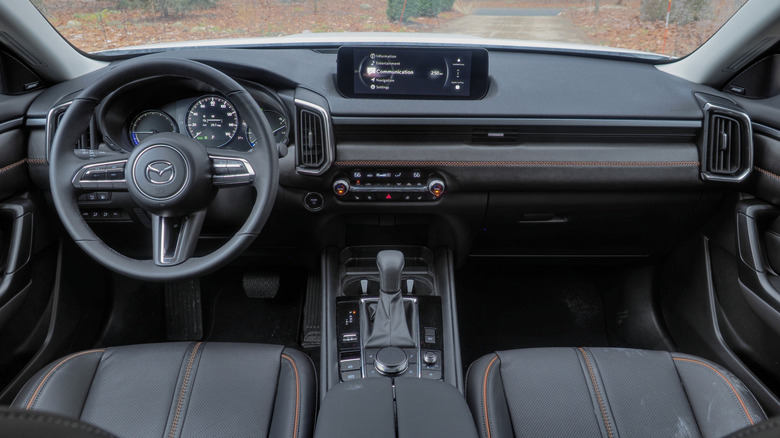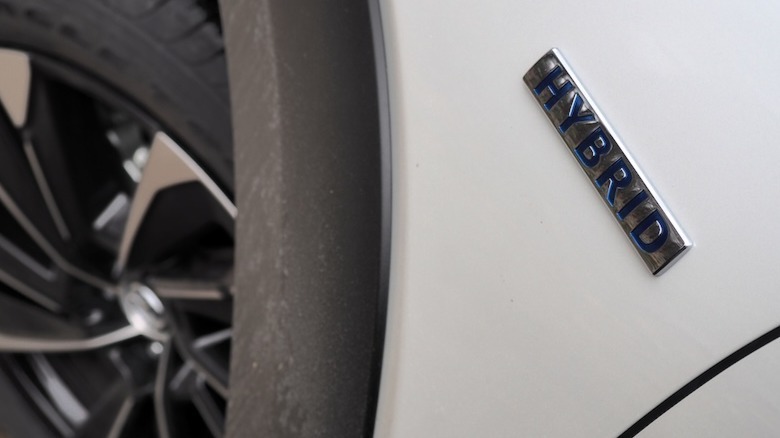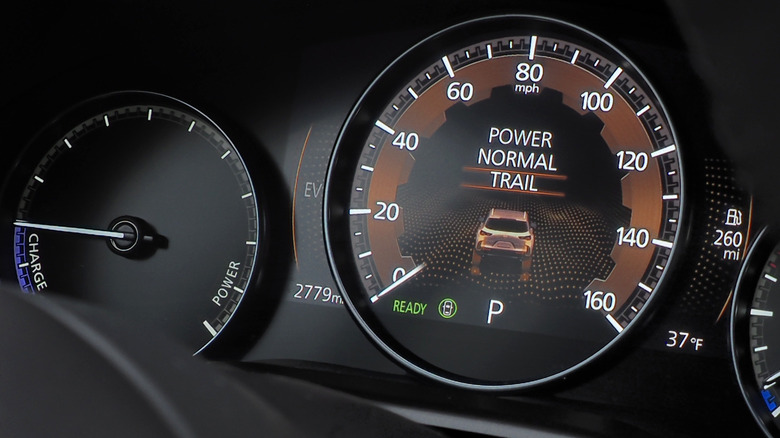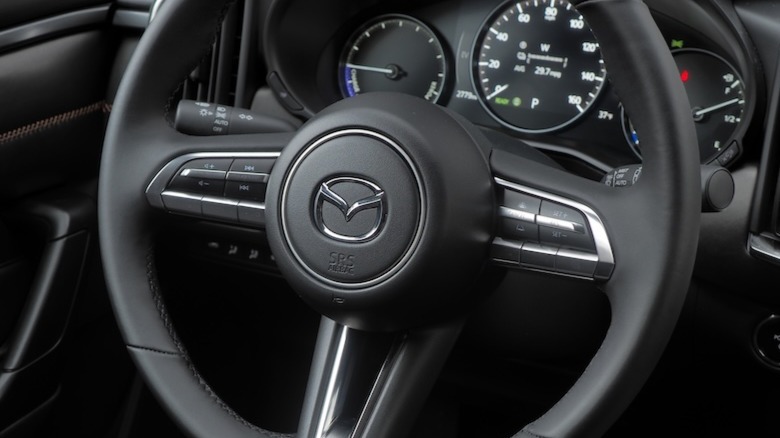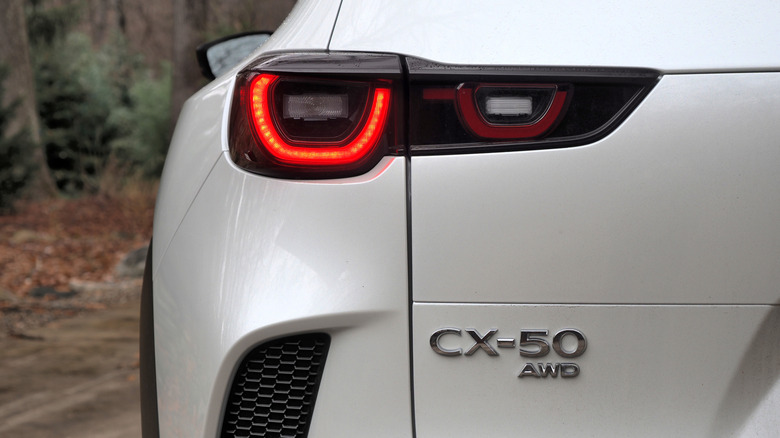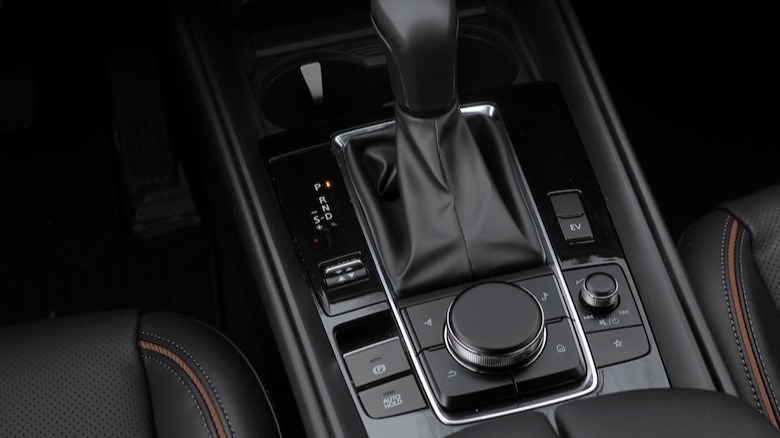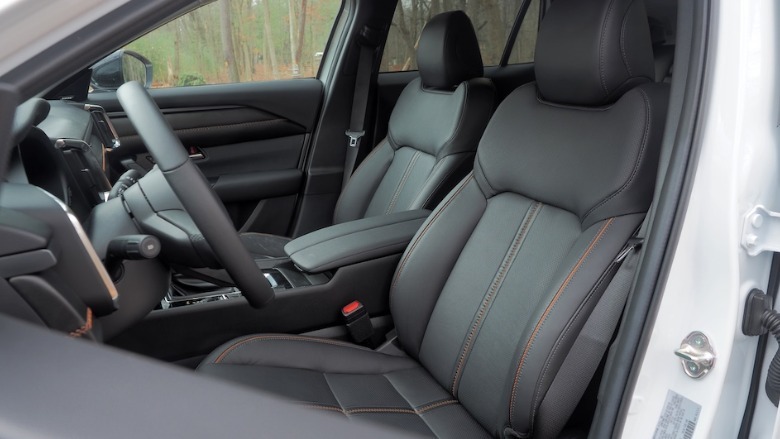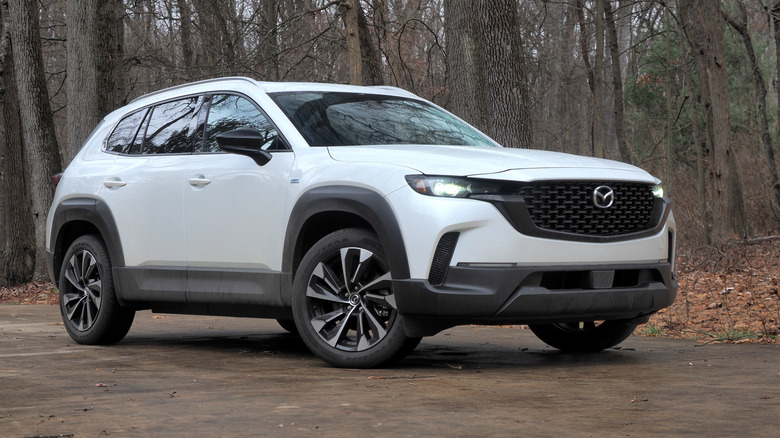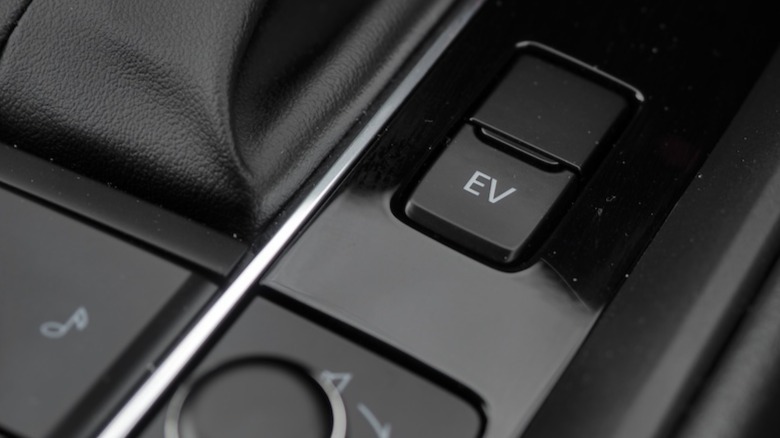The Mazda CX-50 Hybrid Is Good, But I'd Still Buy This Instead
There's a good argument to be made that all new cars should be electrified, and the 2025 Mazda CX-50 Hybrid does little to disprove it. The long-anticipated third powertrain for the charmingly-rugged compact SUV arrives for the 2025 model year, with the promise of better fuel economy, further driving between gas station stops, and yet very nearly the same practicality.
Launched in 2022, the CX-50 followed the same strategy as had worked so well with the CX-30, with which it shares a platform. Slightly larger and markedly burlier than the existing CX-5, not to mention more expensive, it saw electrification-averse Mazda stick with gas-only engines to begin with: a cheaper naturally-aspirated inline-four, and a far punchier turbo version.
Despite being offered in China from late 2023, the hybrid is only now making it to U.S. dealerships. Mazda didn't cook up the CX-50 Hybrid's drivetrain on its own, mind. Instead, it turned to Toyota for a version of its fellow Japanese automaker's gas-electric system.
Lots of electric motors, but no plug
The result consists of a 2.5-liter four-cylinder gas engine, itself good for 176 hp and 163 lb-ft of torque, with a trio of electric motors. At the front, there's 118 horsepower and 149 lb-ft of torque from electric power. Driving the rear wheels, meanwhile, is 54 horsepower and 89 lb-ft of torque of electric power. Total system power is 219 hp.
It's a mild-hybrid, which is to say, there's no provision for plugging the CX-50 in to charge from an external power source. Think Toyota Prius, not Prius Prime PHEV. Instead, the Mazda's diminutive 1.59 kWh battery is recharged by things like regenerative braking, temporarily turning the electric motors into generators while the SUV is slowing down.
The result is what Mazda calls Electronic All-Wheel Drive, or e-AWD. Where a traditional all-wheel drive vehicle would rely on a driveshaft linking the engine at the front to the axle at the back, the CX-50 Hybrid relies on its electric motor to keep the rear wheels spinning. That way, it can also easily deactivate them when traction needs aren't so pressing, helping save power.
Great in the city, but economy is the goal here
It's a clever system, and it works as well in the CX-50 Hybrid as it does in the Toyota RAV4 Hybrid. You notice the electric contribution most at urban speeds, as the Mazda is zippier from a standing start than the power figures would suggest. The gas engine is reasonably quiet, and the segue between all-electric and hybrid modes happens without too much drama or shudder.
That's not to say it's perfect. As can also be the frustrating case with Toyota's hybrids, the electronically-controlled continuously variable transmission (e-CVT) — that's used instead of the CX-50 non-hybrid's regular automatic — can be disconcertingly swoopy in operation. Unlike the predictable engine noises you get with a traditional ICE, often the sounds coming from under the Mazda's hood simply don't correspond with how the crossover is driving.
Add to that the CX-50 Hybrid's early pep giving out at higher speeds, and it's clear that this version of the SUV is more an economy play than a performance one. That's great, if you prize gas savings above all else, though I suspect a lot of drivers may have more mixed priorities.
Eager drivers will want to stick with gas (for now)
That's where the CX-50 Turbo comes in. It's top of the tree for power in the three-engine portfolio here: where the base CX-50 packs 187 hp, the turbocharged 2.5-liter delivers 256 hp when supplied with premium gas, and a beefy 320 lb-ft of torque.
It makes for a far more engaging SUV to drive, even if Mazda's six-speed automatic does feel like it could do with at least a seventh gear for highway cruising. Punchy and eager, the turbo-four may lack some of the very initial immediacy of the hybrid, but it makes up for that with more consistent power throughout the range.
The penalty you pay — beyond price tag, with the turbo starting at $40,800 versus the cheapest CX-50 Hybrid from $33,970, both before $1,420 destination — is fuel economy. The EPA rates the CX-50 Turbo at 25 mpg combined, a far cry from the hybrid's 38 mpg rating.
You might not need to stop so much for gas in the CX-50 Hybrid, but the Turbo SUV is more practical in other ways. Where the gas-electric combo has a tow rating of 1,500 pounds, for example, the turbo more than doubles that, to 3,500 pounds. Trunk space is also slightly higher: 31.4 cu-ft with the rear seats up in the CX-50 Turbo, compared to 29.2 cu-ft in the hybrid.
Not for everyone, but that's okay
This is, of course, one of those situations where more choice only makes things better. The 2025 CX-50 is a compelling option in the compact SUV segment, whether price, performance, or frugality is your lodestar. The new CX-50 Hybrid isn't the right version for everybody, no, but then neither does it need to be.
Given the choice between it and the base model, I'd certainly pick the hybrid. Mazda's cabin design, fit, and finish are all competitive with much more expensive competition, and though its infotainment system still isn't my favorite — only being able to use the 10.25-inch touchscreen for Apple CarPlay and Android Auto, with the native UI ponderously navigated via a dial, remains deeply frustrating — you do get more standard equipment in the gas-electric model. Personally, of the three, the punchier drivetrain would lead me to the CX-50 Turbo, but it's a close call.
Indeed, the only thing which might change my mind would be a plug. Mazda does have plug-in hybrids in its line-up, but the CX-70 PHEV and CX-90 PHEV are considerably larger: much more SUV than I, or a lot of people, really need. Still, their 21 miles of electric-only range seems mighty aspirational compared to the scant, low-speed-only distance you'll drive in the CX-50 Hybrid's EV mode. Here's hoping someone at Mazda is paying attention.
